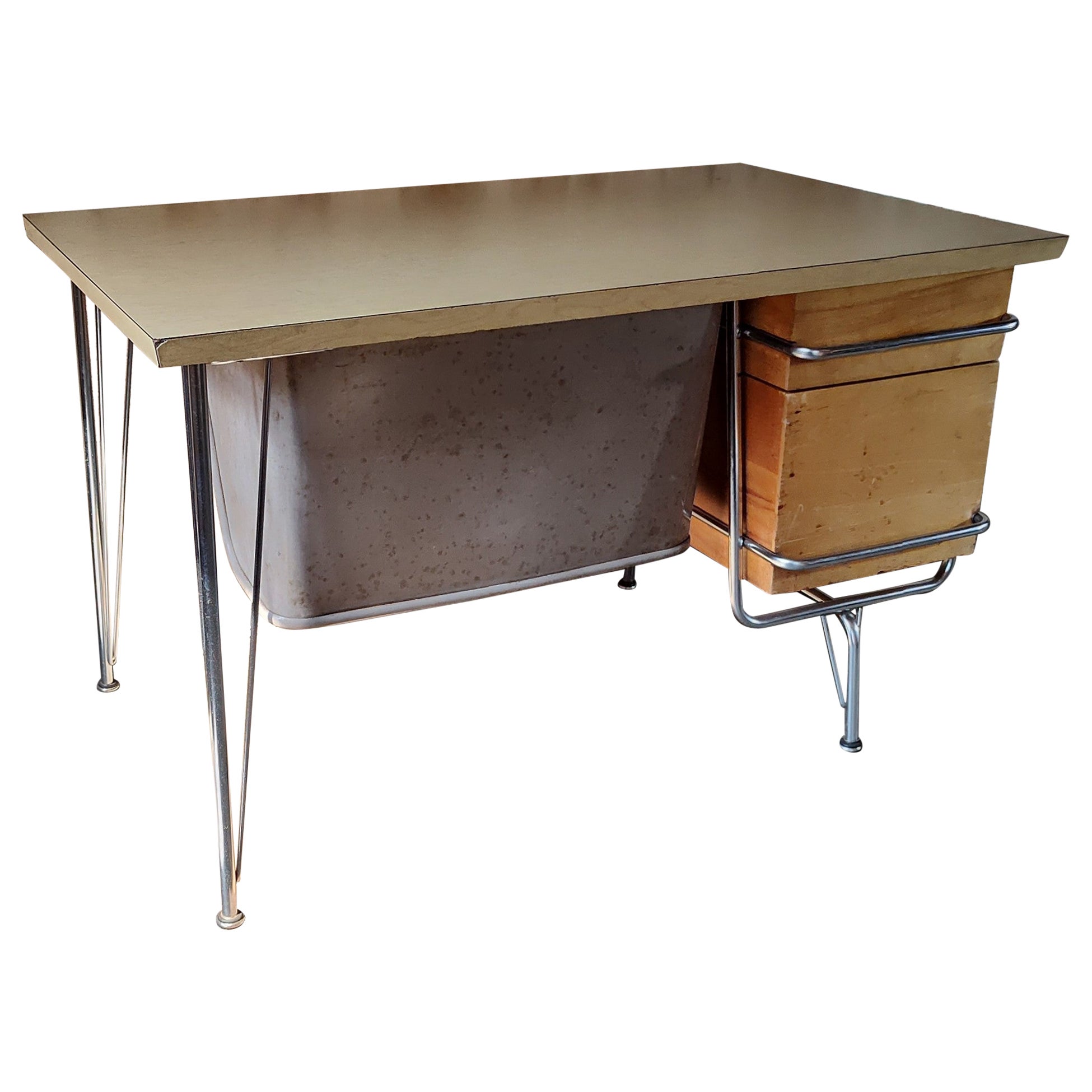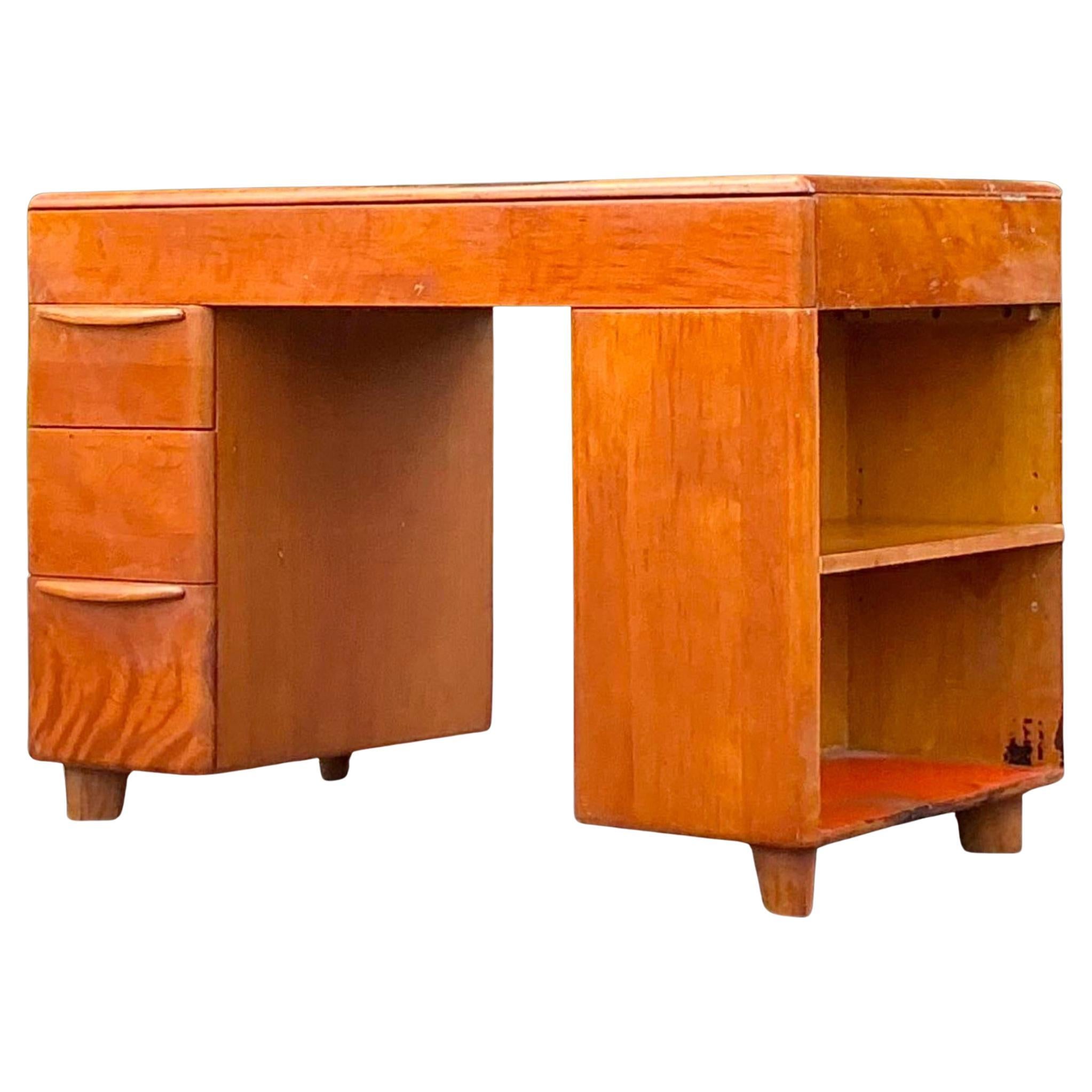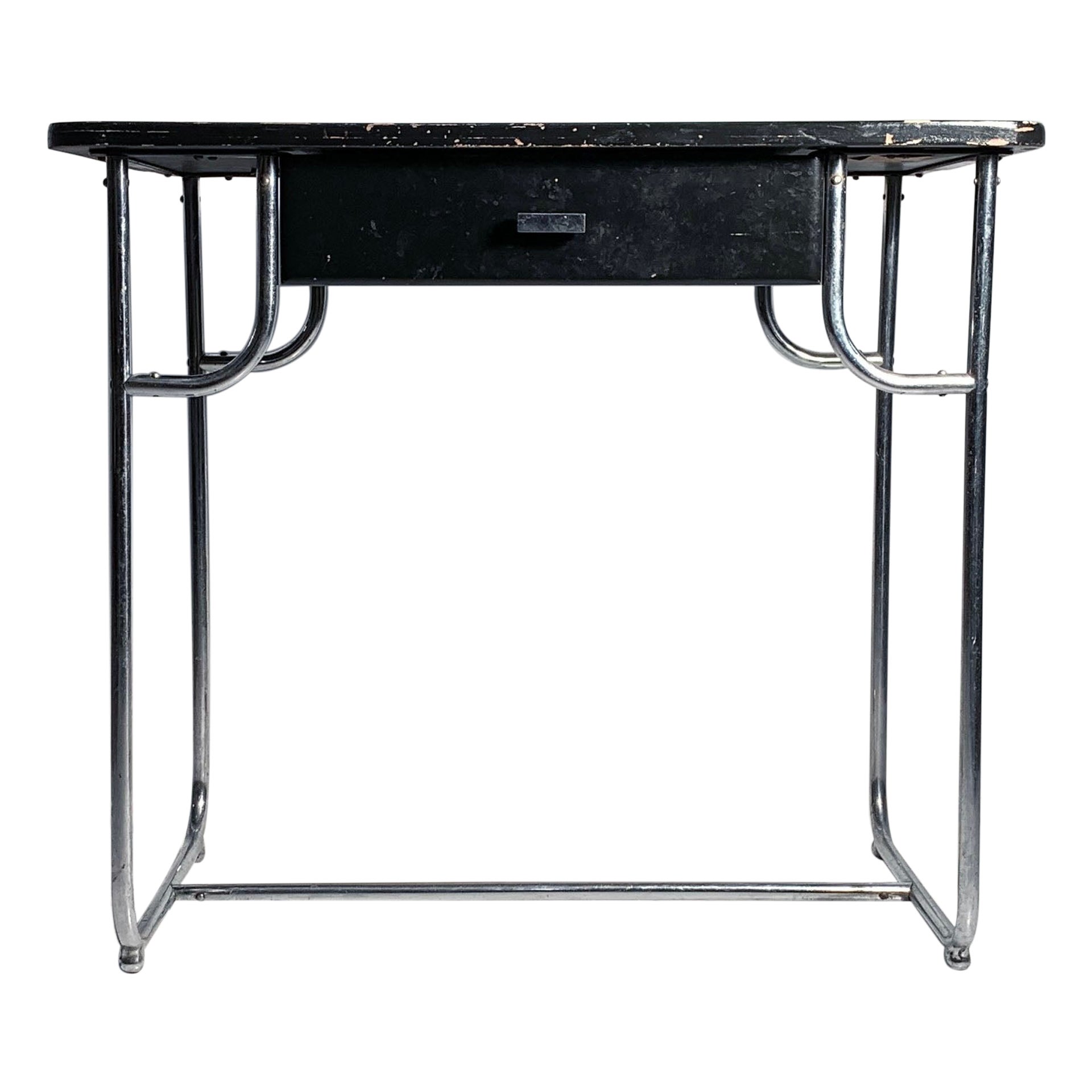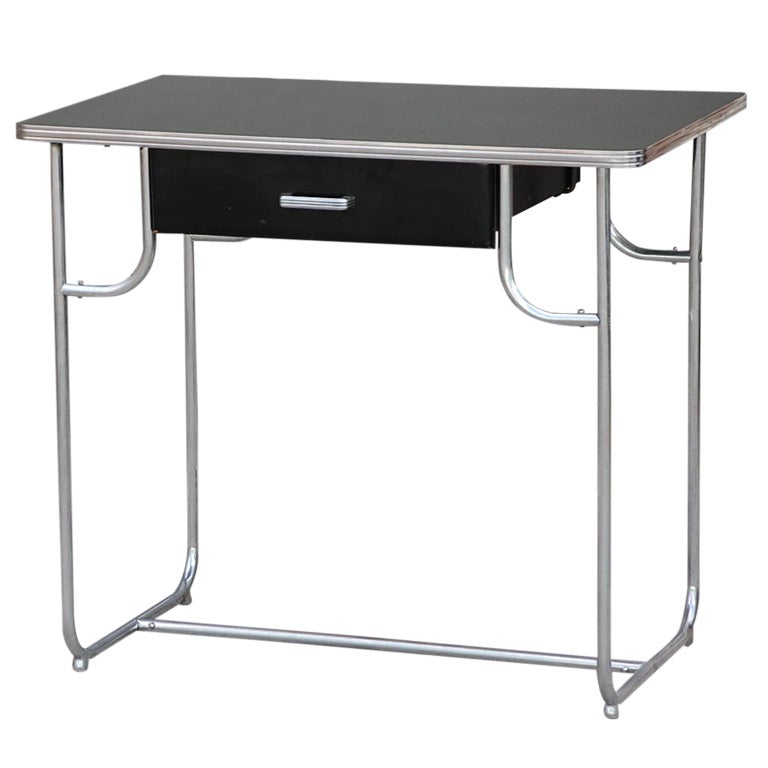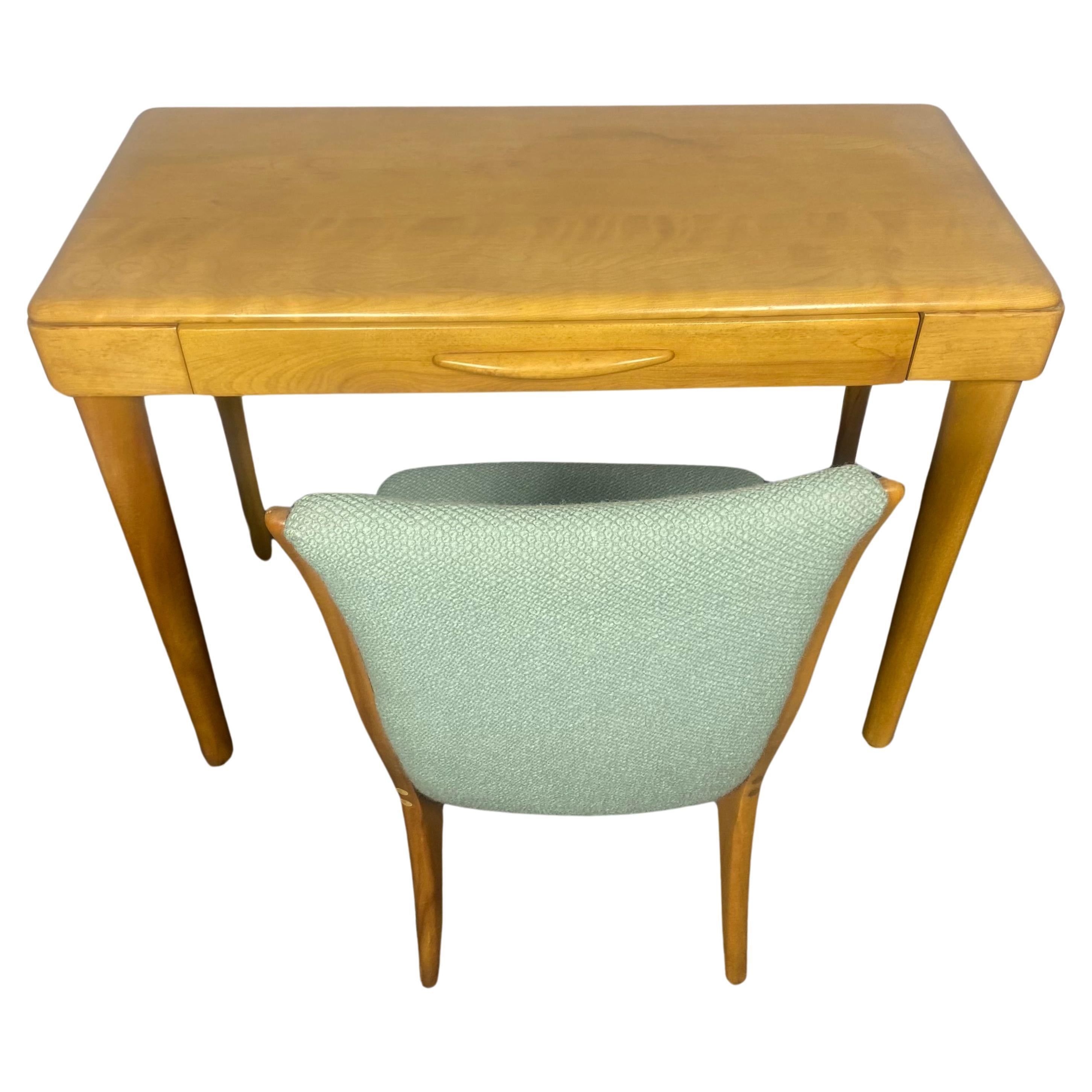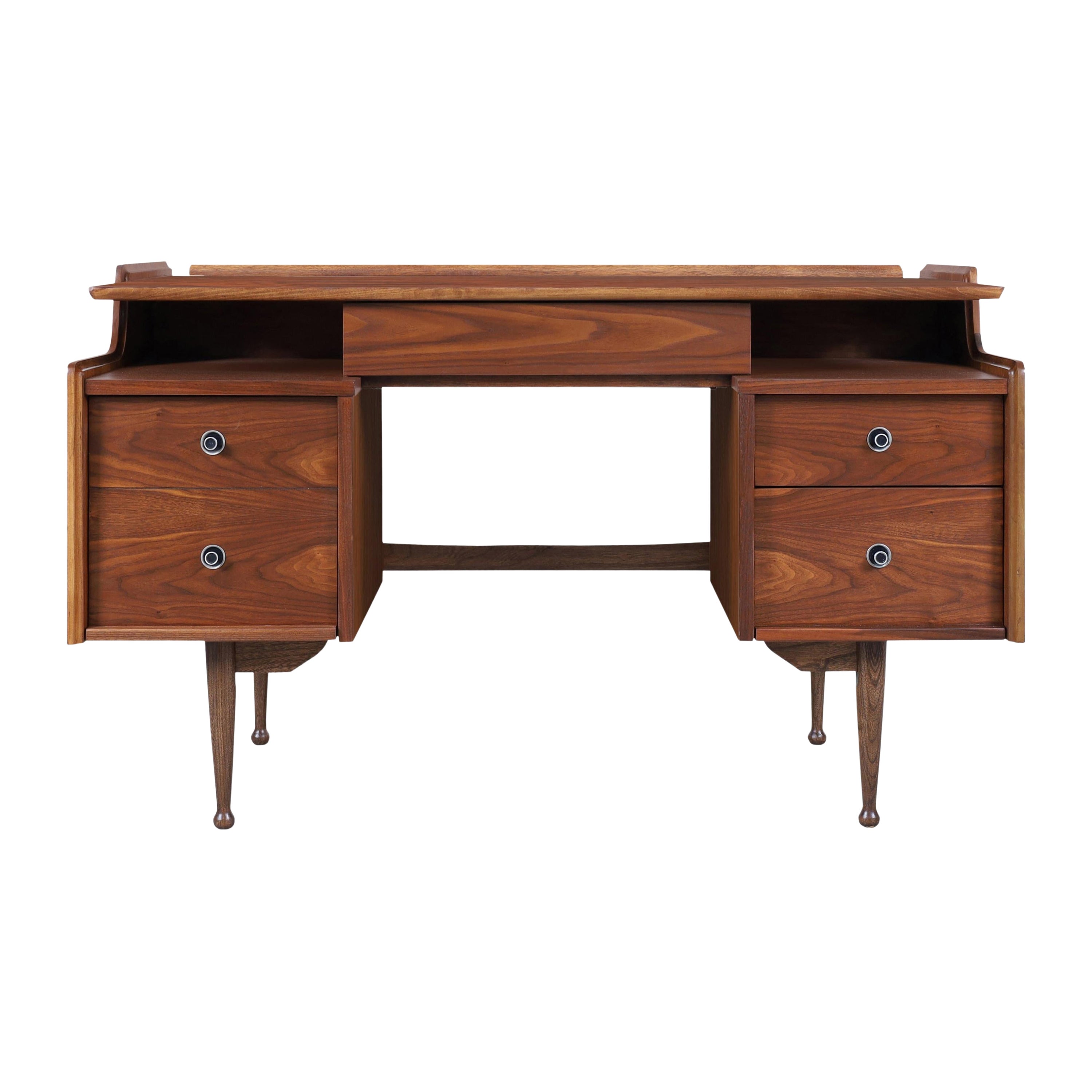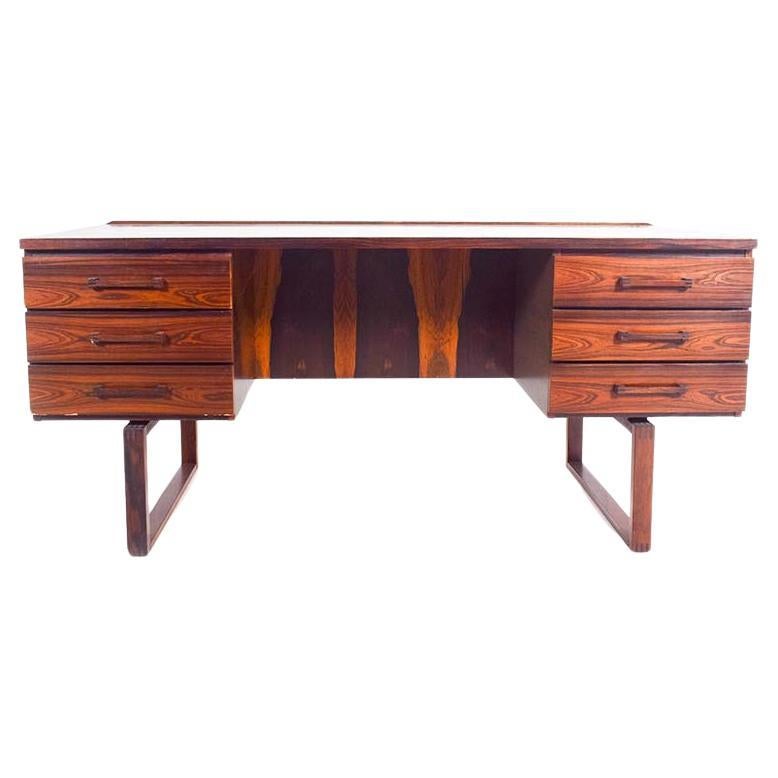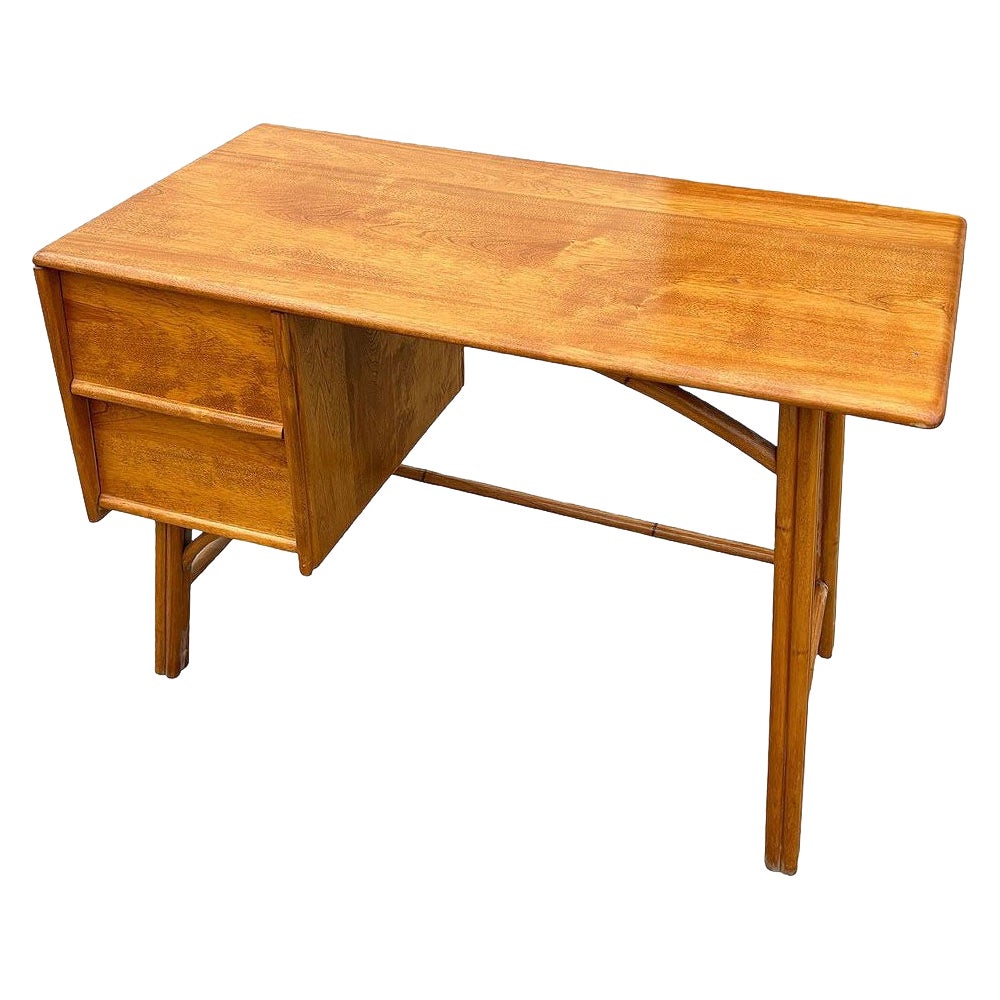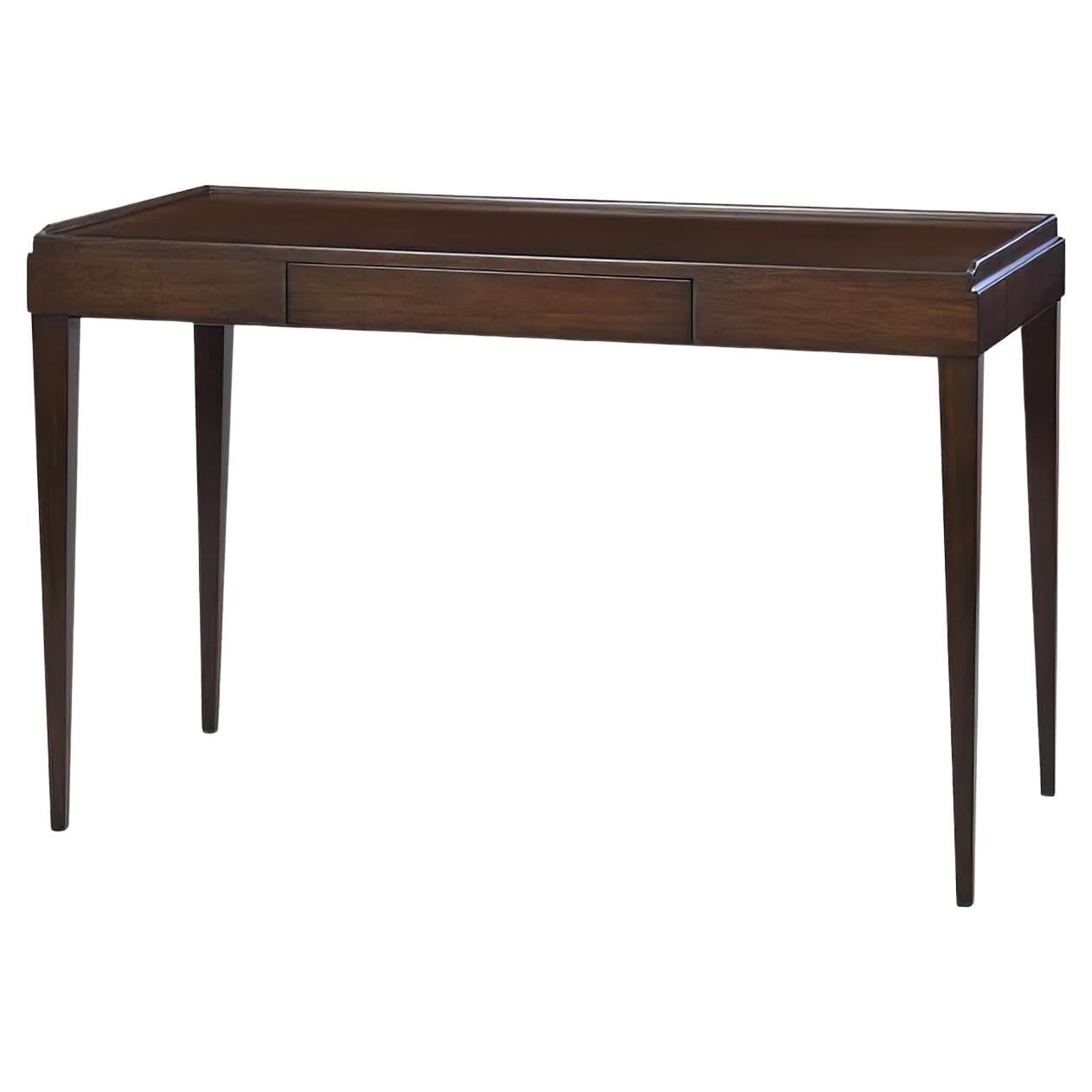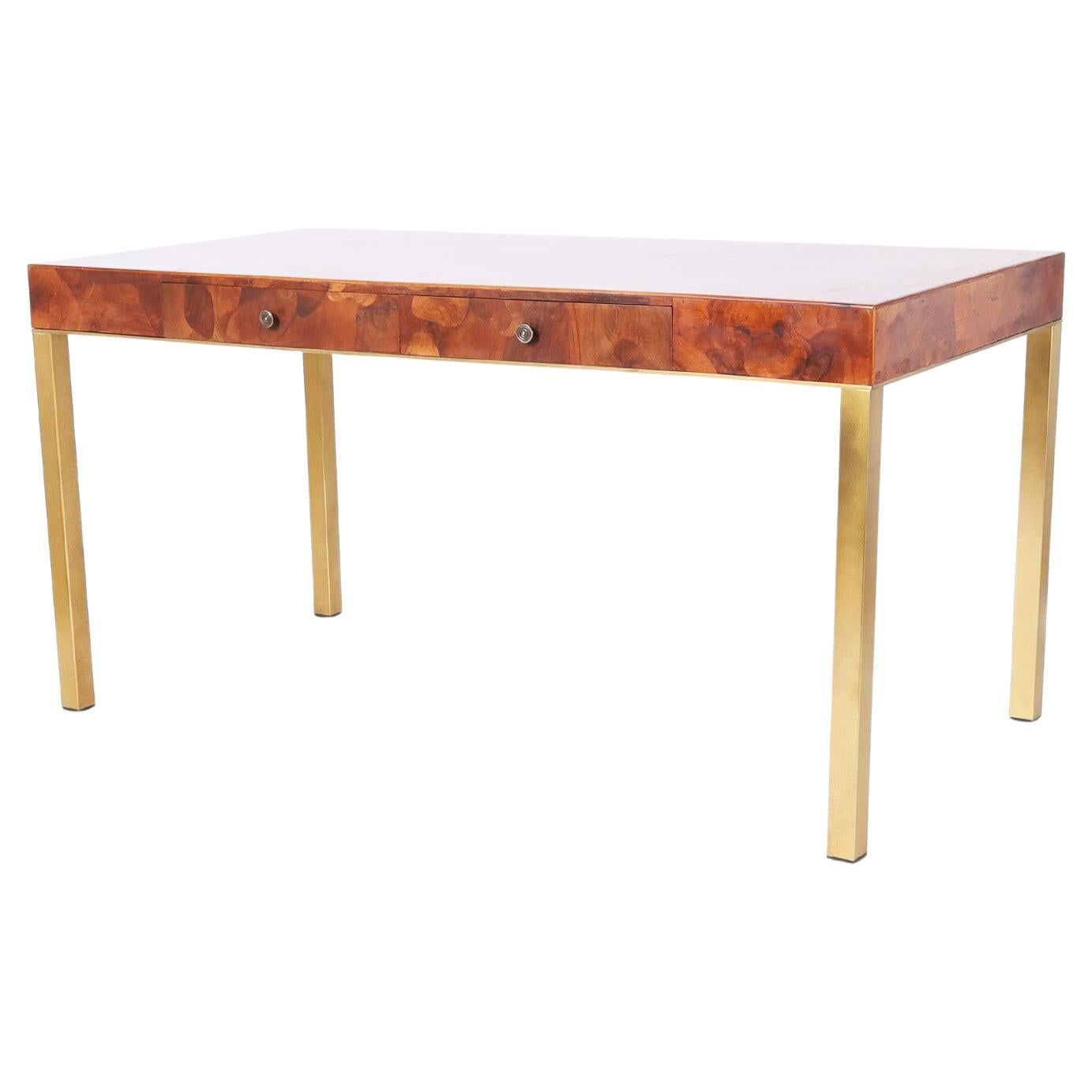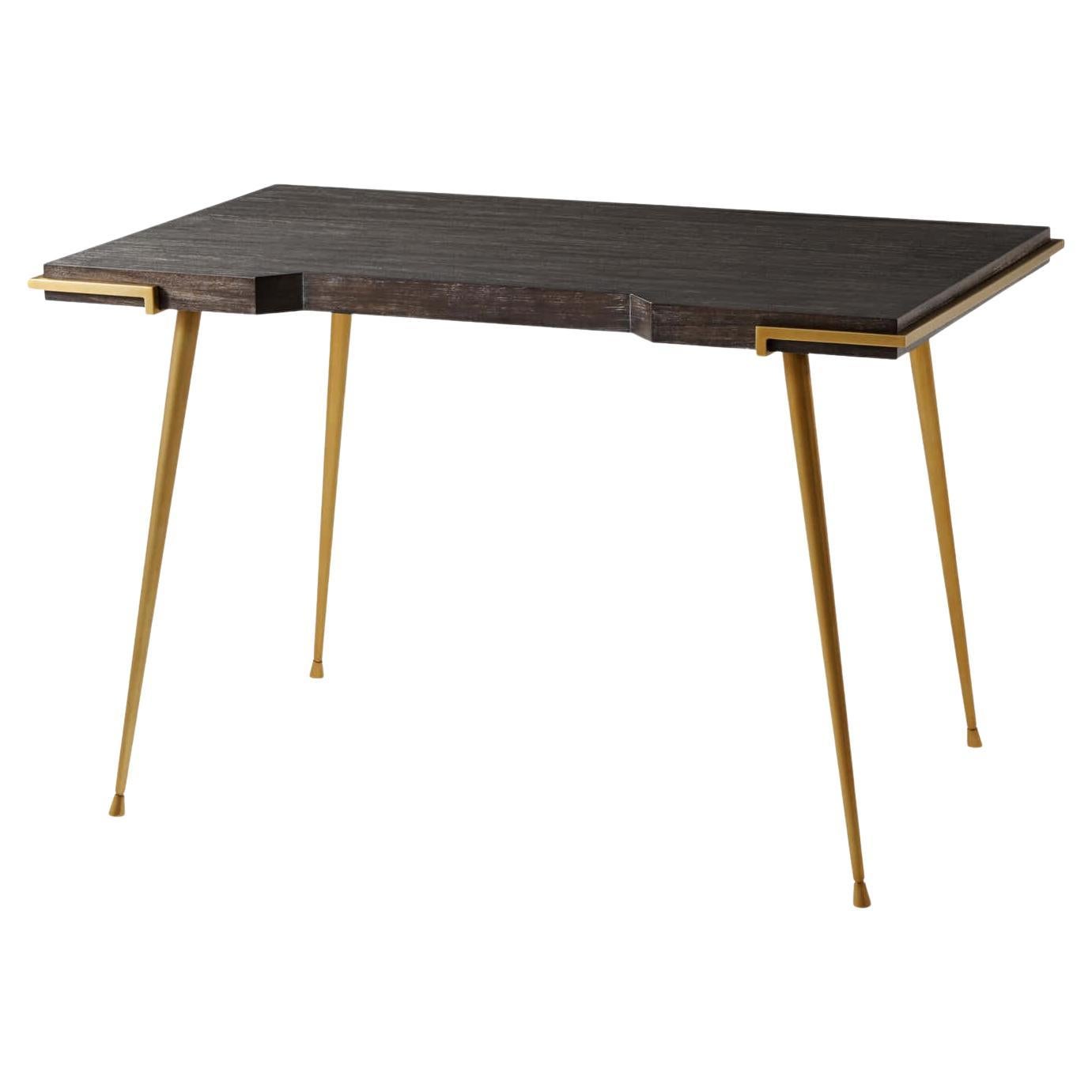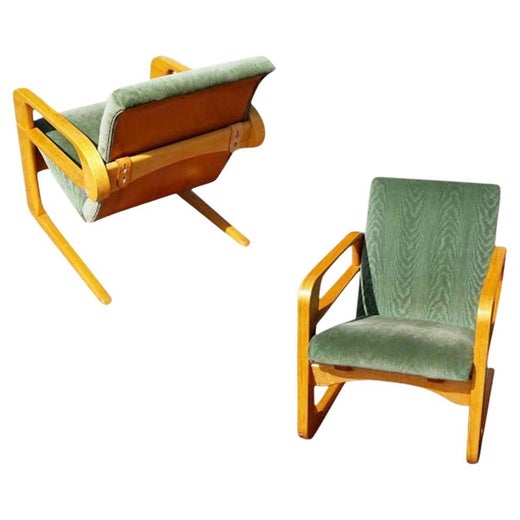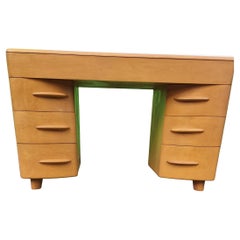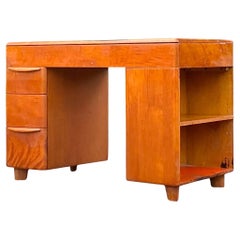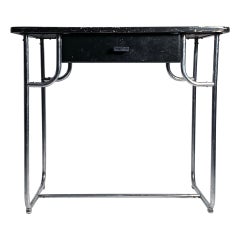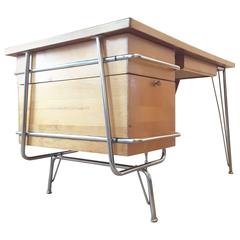
Mid-Century Modern Trimline Desk by KEM Weber for Heywood Wakefield
View Similar Items
Mid-Century Modern Trimline Desk by KEM Weber for Heywood Wakefield
About the Item
- Creator:Heywood-Wakefield Co. (Manufacturer),Kem Weber (Designer)
- Dimensions:Height: 29.25 in (74.3 cm)Width: 48 in (121.92 cm)Depth: 29.5 in (74.93 cm)
- Style:Mid-Century Modern (Of the Period)
- Materials and Techniques:
- Place of Origin:
- Period:
- Date of Manufacture:1955
- Condition:
- Seller Location:Harrogate, GB
- Reference Number:1stDibs: LU238236171853
Kem Weber
Architect and designer Kem Weber arrived in the United States in the vanguard of a wave of progressive Central European talents — among them, Rudolph Schindler, Richard Neutra, Paul T. Frankl and Ilonka Karascz — who would profoundly affect the course of modernism in the United States. In his new home, Weber created a wholly American form of modern design that is sleek and stylish, yet comfortable and practical.
Karl Emanuel Martin Weber — “Kem” was his self-styled nom d’usage — was born and trained in Berlin. In 1914, he became an accidental immigrant to the U.S.. Sent to San Francisco by his teacher-turned-employer, architect Bruno Paul, to oversee an installation at a global design expo, Weber was marooned by the outbreak of World War I. But he quickly grew to love California, even if his early years there were difficult. When design commissions were hard to find, he took jobs as a lumberjack, chicken farmer and art school teacher. (He gained U.S. citizenship in 1924.)
In the mid-1920s, while working for the Los Angeles–based Barker Bros. department store — the largest furniture retailer in the country at the time — Weber regularly traveled around the nation to deliver lectures on modernism. His reputation as a champion of a new, clean and elegant style earned him architectural commissions and contracts to design furniture and items such silverware, coffee services and cocktail shakers. His masterpiece is the Airline lounge chair, designed 1934-1935. With its raked, gently angular frame and cantilevered seat, the chair suggests movement, speed and forward progress. Though it seemed perfect for mass production, Weber was never able to convince a major manufacturer to take it on. In the end, fewer than 300 Airline chairs were made. Today, those may be the rarest examples of Weber’s work, but are always worth looking out for. As you will see on these pages, his designs are both intelligent and stylish. They deserve to be a part of any serious collection of American modernism.
Heywood-Wakefield Co.
Created by the 19th-century merger of two venerable Massachusetts furniture makers, Heywood-Wakefield was one of the largest and most successful companies of its kind in the United States. In its early decades, the firm thrived by crafting affordable and hugely popular wicker pieces in traditional and historical styles. In the midst of the Great Depression, however, Heywood-Wakefield reinvented itself, creating instead the first modernist furniture — chairs, tables, dressers and more — to be widely embraced in American households.
The Heywoods were five brothers from Gardner, Massachusetts, who in 1826 started a business making wooden chairs and tables in their family shed. As their company grew, they moved into the manufacture of furniture with steam-bent wood frames and cane or wicker seats, backs and sides.
In 1897, the Heywoods joined forces with a local rival, the Wakefield Rattan Company, whose founder, Cyrus Wakefield, got his start on the Boston docks buying up lots of discarded rattan, which was used as cushioning material in the holds of cargo ships, and transforming it into furnishings. The conglomerate initially did well with both early American style and woven pieces, but taste began to change at the turn of the 20th century and wicker furniture fell out of fashion.
In 1930, Heywood-Wakefield brought in designer Gilbert Rohde, a champion of the Art Deco style. Before departing in 1932 to lead Herman Miller — the prolific Michigan manufacturer that helped transform the American home and office — Rohde created well-received sleek, bentwood chairs for Heywood-Wakefield and gave its colonial pieces a touch of Art Deco flair.
Committed to the new style, Heywood-Wakefield commissioned work from an assortment of like-minded designers, including Alfons Bach, W. Joseph Carr, Leo Jiranek and Count Alexis de Sakhnoffsky, a Russian nobleman who had made his name in Europe creating elegant automotive body designs.
In 1936, the company introduced its “Streamline Modern” group of furnishings, presenting a look that would define the company’s wares for another 30 years. The buoyantly bright, blond wood — maple initially, later birch — came in finishes such as amber “wheat” and pink-tinted “champagne.” The forms of the pieces, at once light and substantial, with softly contoured edges and little adornment beyond artful drawer pulls and knobs, were featured in lines with names such as “Sculptura,” “Crescendo” and “Coronet.” It was forward-looking, optimistic and built to last — a draw for middle-class buyers in the Baby Boom years.
By the 1960s, Heywood-Wakefield began to be seen as “your parents’ furniture.” The last of the Modern line came out in 1966; the company went bankrupt in 1981. The truly sturdy pieces have weathered the intervening years well, having found a new audience for their blithe and happy sophistication.
Find vintage Heywood-Wakefield desks, vanities, tables and other furniture for sale on 1stDibs.
You May Also Like
Mid-20th Century American Desks and Writing Tables
Steel
Mid-20th Century American Mid-Century Modern Desks and Writing Tables
Maple
Mid-20th Century American Mid-Century Modern Desks and Writing Tables
Wood
Early 20th Century American Art Deco Desks and Writing Tables
Chrome
Vintage 1930s Desks and Writing Tables
Chrome, Steel
Vintage 1950s American Mid-Century Modern Desks and Writing Tables
Fabric, Birch
